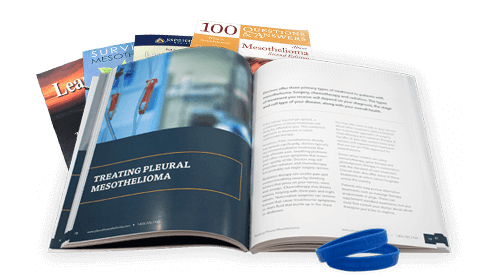What Is Short-Term Asbestos Exposure?
Asbestos exposure that lasts less than a few days is considered short term. There is no safe level of asbestos exposure, but a brief duration of exposure is not likely to cause an asbestos-related disease later in life.
Many people realize they’ve experienced short-term asbestos exposure after it happens and wonder how much asbestos exposure is bad. For example, do-it-yourselfers who renovate part of their home over a weekend may realize afterward that they encountered asbestos-containing materials.
This type of short-term exposure is unlikely to put someone at risk of an illness, but repeated short-term exposures can add up over a lifetime.
Learning about asbestos products and how to avoid asbestos exposure can help people dodge repeat exposure to asbestos and subsequently lower their risk of developing a related disease.
How Much Asbestos Exposure Is Dangerous?
According to the National Institute for Occupational Safety and Health, there is no safe amount of asbestos exposure.
However, evidence shows that short-term asbestos exposure is nowhere near as likely to cause health effects as long-term exposure.
Decades of research have proven a dose-response relationship between asbestos and its related diseases. This means that risk is cumulative and dependent upon how many asbestos fibers a person inhales throughout their lifetime.
Certain jobs and activities are considered high risk for repeat asbestos exposure. For example, working in an asbestos mine, laundering an asbestos workers clothes or coming in contact with an extremely high concentration of asbestos dust are considered dangerous types of exposure.
Unfortunately, many asbestos workers brought home enough dust on their clothes to put family members at risk of secondary asbestos exposure. Many household members have developed mesothelioma from washing contaminated clothes.
Not everyone who is exposed to dangerous amounts of asbestos will develop a related disease. For perspective, approximately 20% of heavily exposed asbestos workers end up developing an asbestos-related disease. About 8% will develop mesothelioma.
No cures exist for these conditions. All asbestos-related cancers are incurable and considered terminal.
One-Time Asbestos Exposure
A one-time exposure to asbestos is highly unlikely to pose a health risk, unless there is an extremely high concentration of asbestos in the air that clouds the room.
- You encounter a damaged asbestos-containing product that is crumbly.
- You sawed, sanded, cut or scraped the product.
- You were working in a small or poorly ventilated area.
- The product contained a highly carcinogenic type of asbestos such as blue asbestos.
It is important to avoid future asbestos exposure to keep your risk of disease low. If you believe your home contains asbestos materials, make sure to have them tested before doing any renovations.
Always hire a licensed asbestos abatement company to conduct testing and carry out any work involving asbestos. The safety precautions and tools required to do asbestos work are extensive and expensive and you could incur steep fines for doing it improperly.
A one-time exposure scraping or sanding down asbestos tiles inside a home could be serious because that type of work releases a lot of fibers in a small space. Comparatively, a one-time exposure walking around a neighborhood after a natural disaster has damaged asbestos-containing construction materials is far less serious because you are outdoors where concentrations of asbestos are diluted in the air and dispersed by the wind.
Risk Factors for Asbestos-Related Diseases
- Mesothelioma
- Lung cancer
- Ovarian cancer
- Laryngeal cancer
- Asbestosis
- Pleural effusion or peritoneal effusion
- Pleural plaques
- Pleural thickening
- Atelectasis (complete or partial collapsed lung)
Mesothelioma is a type of cancer almost exclusively caused by asbestos exposure. The two primary types are pleural mesothelioma, which affects the lining of the lungs, and peritoneal mesothelioma, which affects the abdominal lining. Most patients survive one year after being diagnosed with mesothelioma.
Certain risk factors involving exposure and a person’s health and lifestyle affect their chance of developing a related disease.
- Type of Asbestos: All types of asbestos are proven carcinogens, but certain types, such as blue asbestos, are considered more carcinogenic.
- Concentration of Asbestos: If you can see white dust in the air, the concentration of asbestos is high and dangerous.
- Period of Exposure: Long-term exposure is far more likely to result in health effects than short-term exposure.
- Genetic Risk: Researchers suspect that certain genes may put people at an increased risk of developing an asbestos-related illness.
- Smoking: Exposure to cigarette smoke and asbestos has a synergistic effect that multiplies a person’s risk of developing lung cancer.
Signs of Asbestos Exposure
The most important signs of asbestos-related disease to be aware of affect the respiratory system and the digestive system.
- Difficulty breathing during exercise
- Wheezing
- Chest pain
- Abdominal pain
- Abdominal swelling
- Digestive issues
- Fatigue
What to Do if You Think You’ve Been Exposed to Asbestos
- Know the Risks: It is important to understand the health risks, but not fixate on them. The vast majority of people who are exposed do not get sick.
- Tell Your Doctor: Be sure to make your doctors aware of your exposure history. They will help you monitor your health over time and can guide you on when to begin cancer screenings.
- Monitor Your Health: It takes 10 to 50 years for these diseases to develop. You don’t need to monitor your health for signs of disease until at least a decade has passed.
- Stop Smoking: If you’ve been exposed to asbestos, quitting smoking is the best thing you can do to lower your risk of developing lung cancer.
- Get Vaccinated: Stay current on flu and pneumonia vaccines because these conditions could worsen an underlying asbestos-related respiratory condition.
If you’ve already been diagnosed with an asbestos-related disease, treatment is available to control symptoms and improve your life expectancy. Many people diagnosed with these conditions qualify for compensation to cover medical costs and other related expenses.



